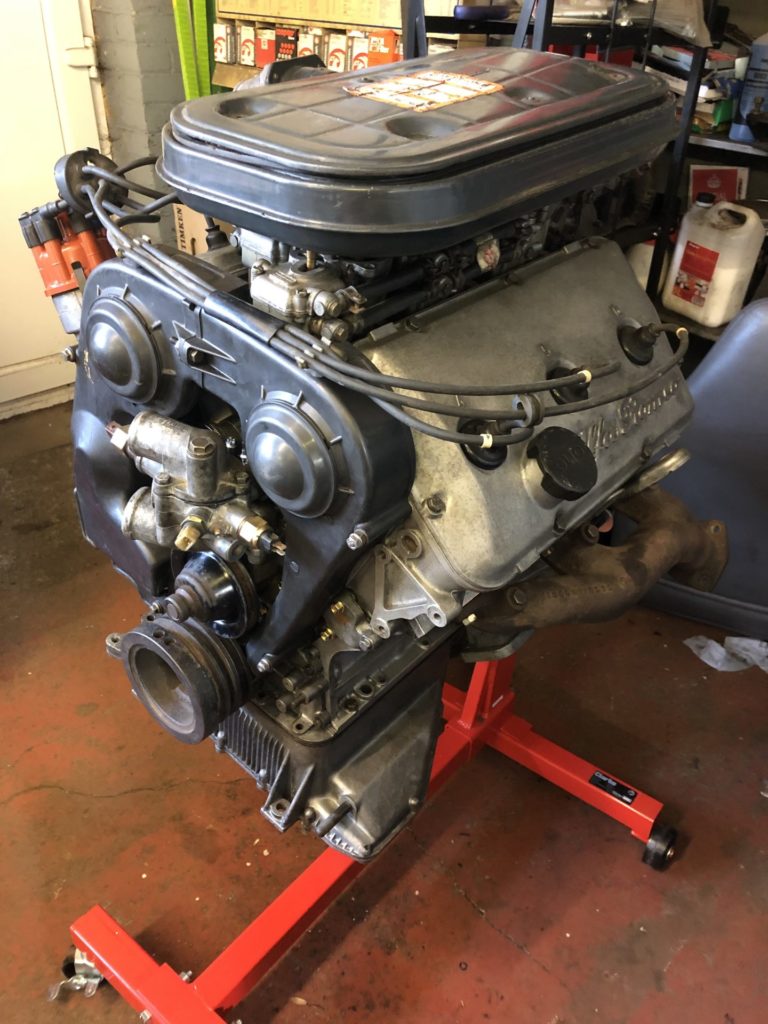The Italian car manufacturers have a wonderful history of engine design and manufacture – the Fiat twin cam, the Lancia V4, Enzo Ferrari’s V12 and flat-12. The Cizeta V16. But since this is an Alfa Romeo newsletter, let’s consider the Alfa engines – most famous of course being the NORD twin cam and Busso V6.
The V6 has been a favourite of mine for many years and I’ve owned 60 cars fitted with an engine that such personality, it has its own name. Production commenced in 1979 and lasted until 2005, when it was decided that the engine could not be made to comply with forthcoming emissions legislation. The last batch of Busso V6s left the factory on 31 December 2005 and Giuseppe Busso died on 3 January 2006.
But an increasing worldwide population and increasing pollution has meant pressure on vehicle manufacturers to reduce emissions has continued relentlessly. We are now in the age of the electric vehicle – but what does that mean for Alfa Romeo? The success of a car is judged by sales volumes and how well it compares to its rivals.
Electric cars are of course not the zero-emission vehicles that some claim because there is an environmental cost to their production (which is higher than the environmental cost of producing fossil-fuelled vehicles). They also use brakes and tyres that emit particulates in the same way as fossil-fuelled vehicles.
I run a garage and we are seeing electric vehicles presented for maintenance and repair. The suspension and braking systems are similar to older vehicles as are the electronics – which of course get more complicated and advanced with each passing year.
One thing that has put buyers off electric cars is range-anxiety. The infrastructure for petrol/diesel is embedded in the UK, but differing electric charging ports for different manufacturers and insufficient charging ports for long-distance drivers has seen electric vehicles favoured by low mileage/short journey drivers. In the current climate of energy price hikes, owners who have switched from petrol or diesel to save money may be in for an unwelcome surprise if they are charging their vehicles at home. Employers have already introduced “no charging personal items” notices on workstations due to electricity prices.
Few would argue that electric cars accelerate much faster than petrol or diesel cars. 100% of the torque is available immediately so there is almost no chance of a fossil fuelled vehicle keeping up, initially. But in a crowded world with speed limits, speed cameras and insurance black boxes, the focus soon turns to range. When I was driving 50,000 miles a year I used to choose my chariots carefully – my Giulietta diesel would go from West Yorkshire to Swindon, back home and back down to Swindon again on one tank of diesel. That was 69mpg and meant I only had to fill it once a week. I had a Citroen XM that would easily travel over 700 miles on a tank of diesel, at 40 mpg (HUGE tank!).
But of course we don’t travel far these days because with laptops and Microsoft teams, meetings are held in the dining room at home not the boardroom in an office block. For the vast majority of drivers, it seems that electricity will do the job for their motoring needs. But for those of us who consider ourselves petrolheads, is that enough?
The increasing prevalence of clean air zones and congestion charging zones could well price most drivers of older vehicles out of city centres and perhaps we are heading into a world of self-driven car sharing for commuting and short journeys. But the weekend toys will hopefully be allowed to continue. Let’s enjoy them while we still can!!
People used to say if you bought an Alfa you were just buying the engine and everything was thrown if for free. It’s hard to imagine any manufacturer managing a believable USP in the current car market. So what are our readers’ views – would you buy an electric Alfa Romeo?


At the moment I’d be reluctant to buy an EV (and I just sold a hybrid) no matter who built it. We need to look beyond EVs for alternatives to fossil fuels. As it stands EVs are being pushed out before the technology is ready. They’re too heavy, the energy density is dreadful – 300WH/Kg as opposed to 12KWH/Kg for diesel – and Li-Ion is inherently unstable